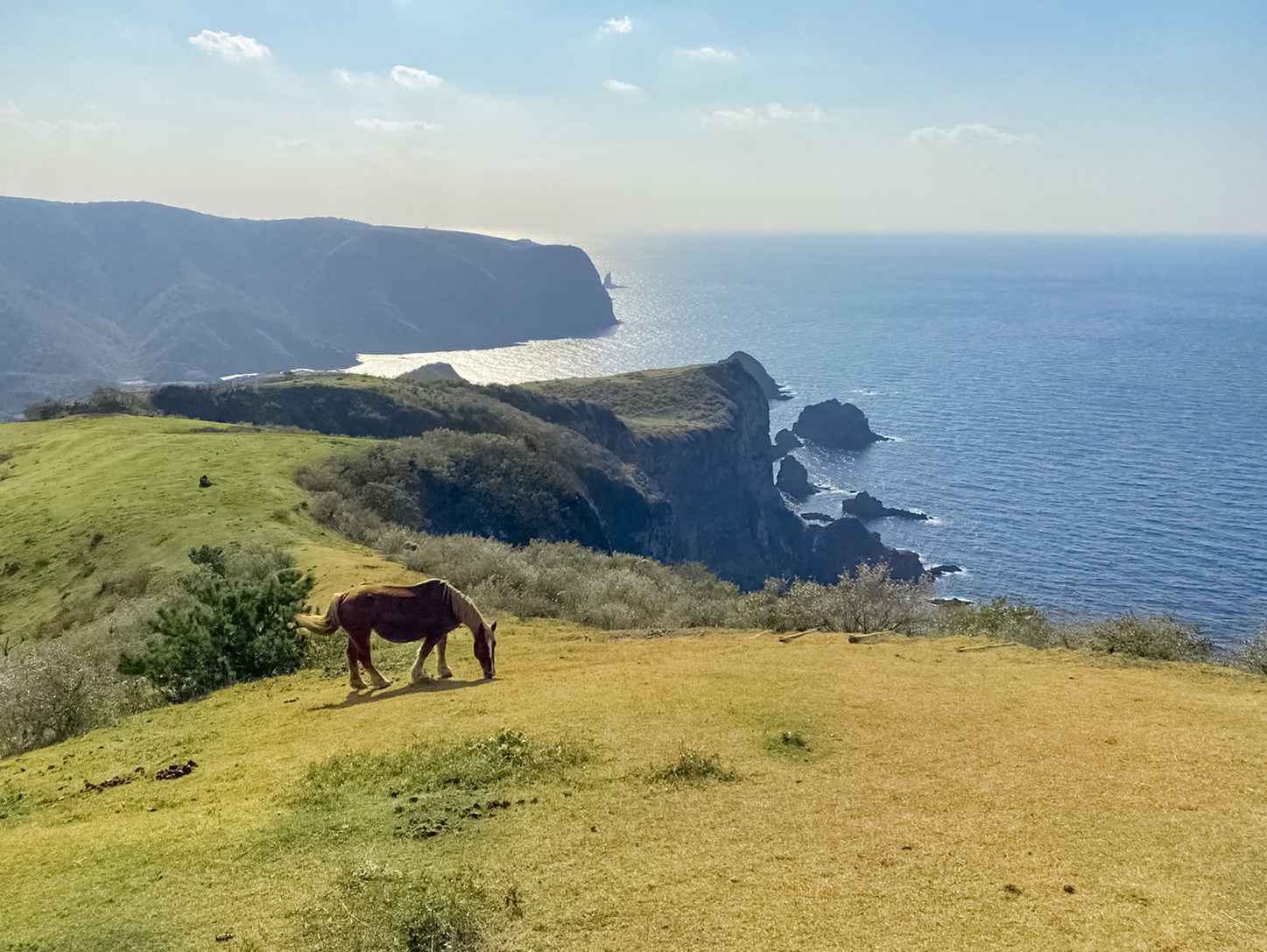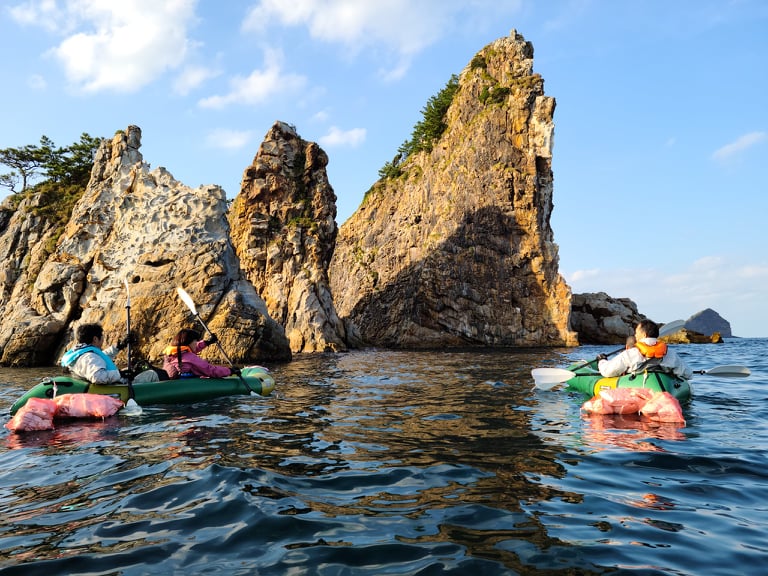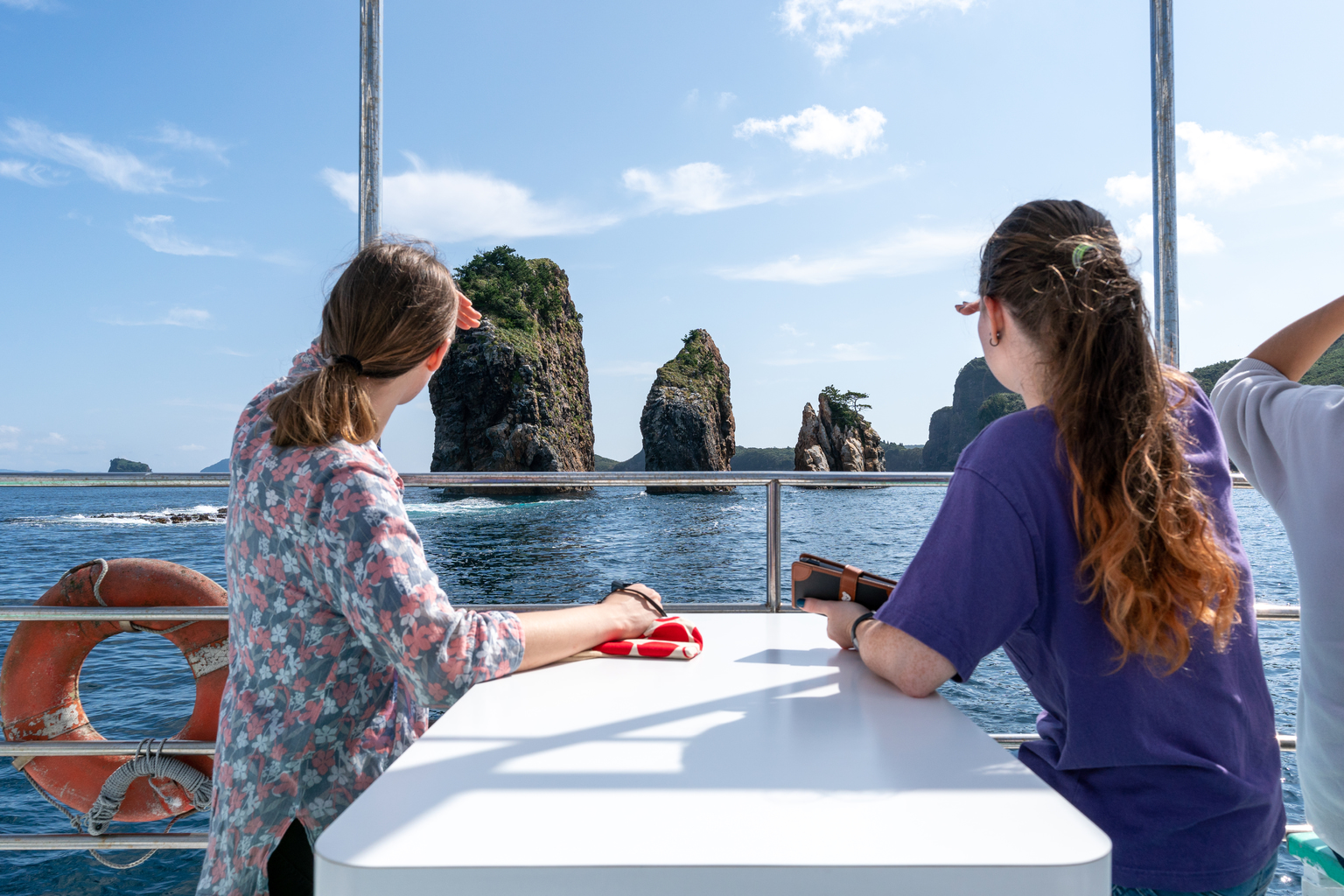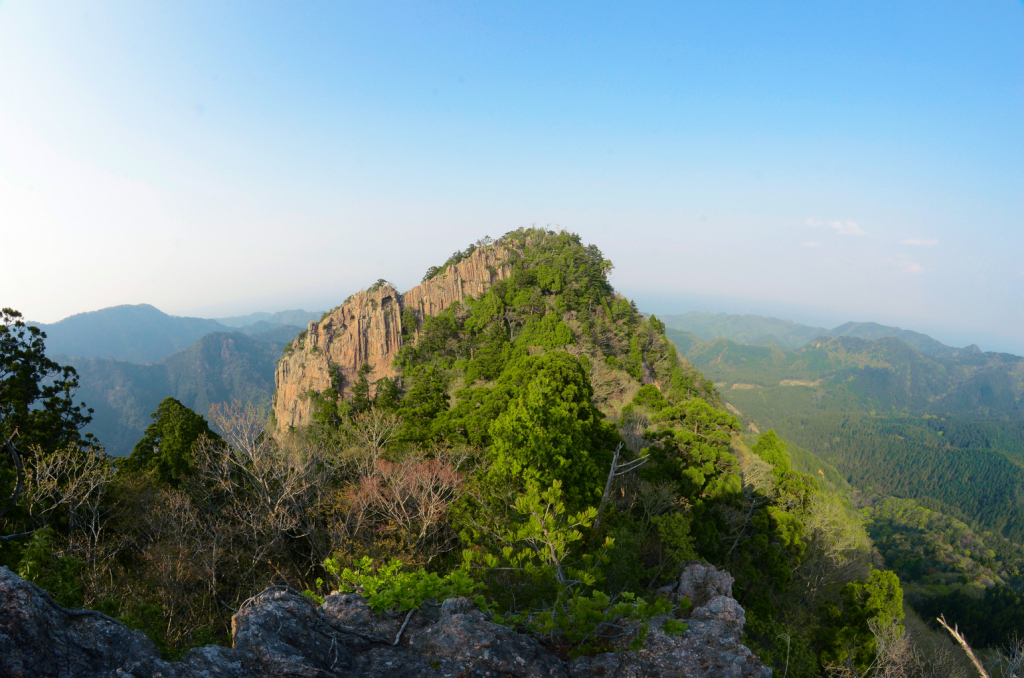The word “unique” is thrown around more than it should in many travel pieces, but there are exceptions. The Oki Islands, a chain of about 180 islands off the coast of Shimane Prefecture, is one of these. Geographically remote, the four main islands of the Oki archipelago have evolved separately from Japan’s Honshu Island — both culturally and physically. Home to endemic species, abundant obsidian veins and curious cultural traditions, the islands and their unique ecosystems are both designated a UNESCO Global Geopark and part of Daisen-Oki National Park to ensure their protection and preservation. Explore the history and natural wonders of these fascinating islands before heading out on your own adventure.
Exile in Opulence
Over a thousand years ago, the islands were used as a point of exile, especially for nobles, aristocrats — even emperors. The wealthy and well-connected served their sentences in the Oki Islands because while the reigning rulers and their attendants wanted them far away so they couldn’t meddle in government affairs, they also wanted to ensure they had a comfortable time away. Here, they could maintain their accustomed level of luxury and should they expire — naturally or otherwise — their vengeful ghosts wouldn’t seek out those who sent them away.
Notable exiled higher-ups include Emperor Gotoba, who was sent here in 1221, and Emperor Godaigo, who arrived over a century later in 1332. Ono-no-Takamura, a famous poet, served a sentence here from 838. The influx of affluent nobility — criminal or otherwise — meant there was an abundance of high culture and material splendor that most average people of the time would never witness.

A Prime Trading Post
During the Edo Period (1603–1867), the Oki Islands became a vital trading point on the Kitamae-bune shipping route, which transported goods and novelties between Osaka and Hokkaido. For over a century, thousands of ships would anchor at the ports and share cultural snippets from both north and south, forming a new mix of cultures. The remnants of this domestic cross-cultural communication are still visible in festivals and folk songs on the islands today.
On Top of the World
The Oki Islands’ craggy coastlines, blood-red cliffs, verdant green fields and tangled woodlands are a dream for hikers. With so many natural wonders, it’s almost impossible to list them all. The Kuniga Coast offers panoramic views of the ocean, combined with horses and cows calmly grazing in the fields next to you. This is where you’ll find Matengai Cliff, a 257-meter-high rock face so straight and smooth it looks like it could have been cut by a knife.
The brilliant red cliff of Sekiheki in Chibu Village displays how volcanic activity evolved in the region, indicating where iron-rich lava oxidized after eruption and painted the rocks a rusted red. Rocks along the Akiya Coast stand as another vibrant reminder, where a rock with an eroded arch in the shape of a heart also holds a spiritual place on the islands, as legend states a goddess gave birth here.
The deep forests with looming ancient Japanese cedar trees along the Washigamine Hiking Trail offer a stark contrast to the bare red cliffs above. About 800 giant trees — some growing in mysterious, contorted shapes — emanate an overpowering natural aura among the rocks, vines and bushes.
Note: The Washigamine Hiking Trail is currently closed for repairs.

From the Sea
Exploring the islands on foot is a fantastic experience, but you’d be missing out if you didn’t take to the waters. You can choose your own level of adventure here, from relaxing sightseeing cruises to adrenaline-pumping cave tours by sea kayak.
The sightseeing tours range from boats with large windows in the hull showcasing underwater volcanic rock sites and sea life near Ama Town, to catching the sunset at Rosoku-jima (Candle Island in English), off the coast of Okinoshima Town. This 20-meter-tall stacked rock lights up into a blaze as the sun sets over the horizon, making it look like a glowing candle in the sea. In Chibu Village, you can also gaze up at Sekiheki’s towering red cliff while bobbing on the ocean to fully grasp its magnificence.
For those craving something to test their strength, hop on a sea kayaking or packrafting tour, where you can brave the waves around the towering cliffs and rocks jutting out of the deep waters. In the towns of Nishinoshima and Okinoshima, you can even paddle into caves carved by the wind and the waves, to get an immersive experience of nature’s power.
Value-added Travel Tips
To make the most of your island adventure while simultaneously respecting the sensitive environment around you, make sure you’re on top of the geopark and national park regulations before you go. When in doubt, follow the tried-and-true motto “Take nothing but photos, leave nothing but footprints.”
For in-depth insight into the islands upon arrival, head to the Oki Islands Geopark Museum, which is conveniently only a one-minute walk from Saigo Port. Here you can get an overview of the Oki Islands’ origins, ecology and geology, as well as cultural practices and other fascinating aspects. Exhibits are available in both English and Japanese, making it easy to become an Oki expert in no time.
For a more personal experience, consider hiring one of the multilingual tour guides available. Not only can they convey the beauty and rich history of the region in detail, they are certified geopark guides and are well-versed in both educating people and helping preserve the natural settings they work in. They can also introduce you to locals and help you connect with the customs during your travels.

Good to Know Before You Go
Explore the Oki Islands virtually and immerse yourself in its natural wonders ahead of your adventure.
More info: visit-okiislands.e-oki.net
Getting to and around the Oki Islands
A visit to these remote islands means exploring different modes of transport, but it doesn’t have to be difficult. Choose from visiting by plane, ferry or the highspeed ferry, the Rainbow Jet. Inter-island travel is serviced by smaller ferries — grab a day pass to make island-hopping a breeze. See what route is best for you.
Book your Oki Islands accommodation and at least one activity online and you may be eligible to get your ferry trip back to Honshu for free. Learn more about the Oki-Toku ticket.
Sponsored Post









